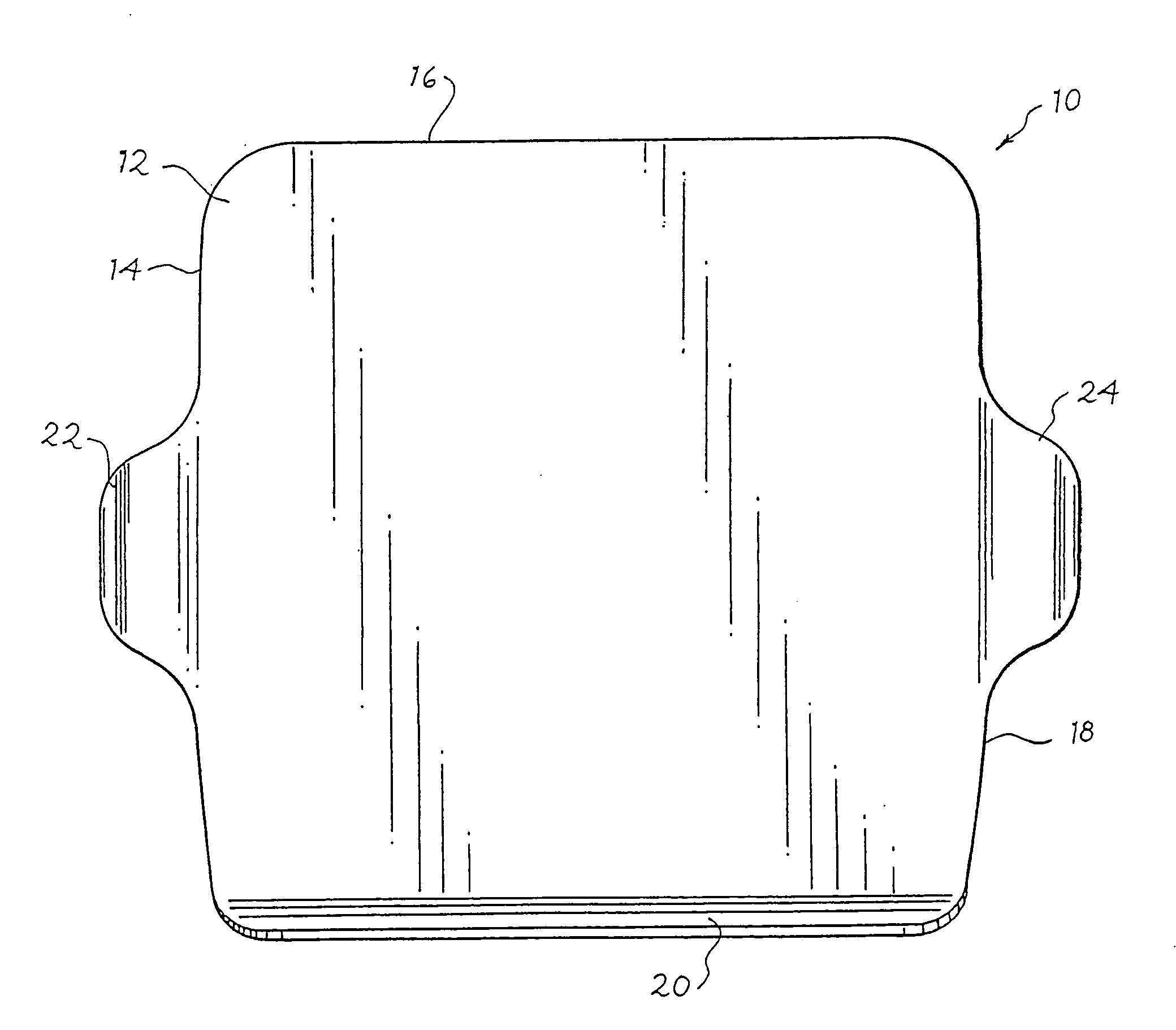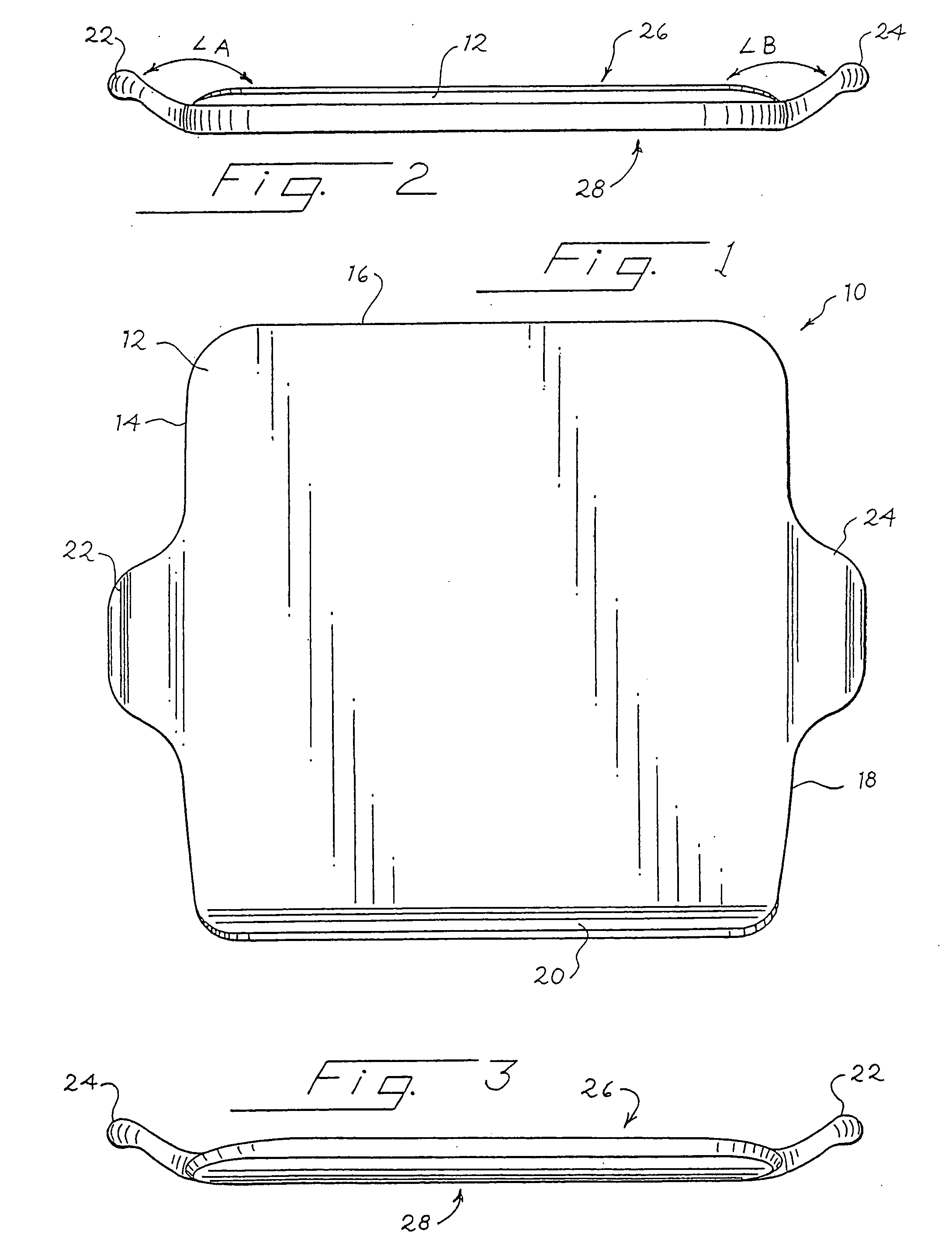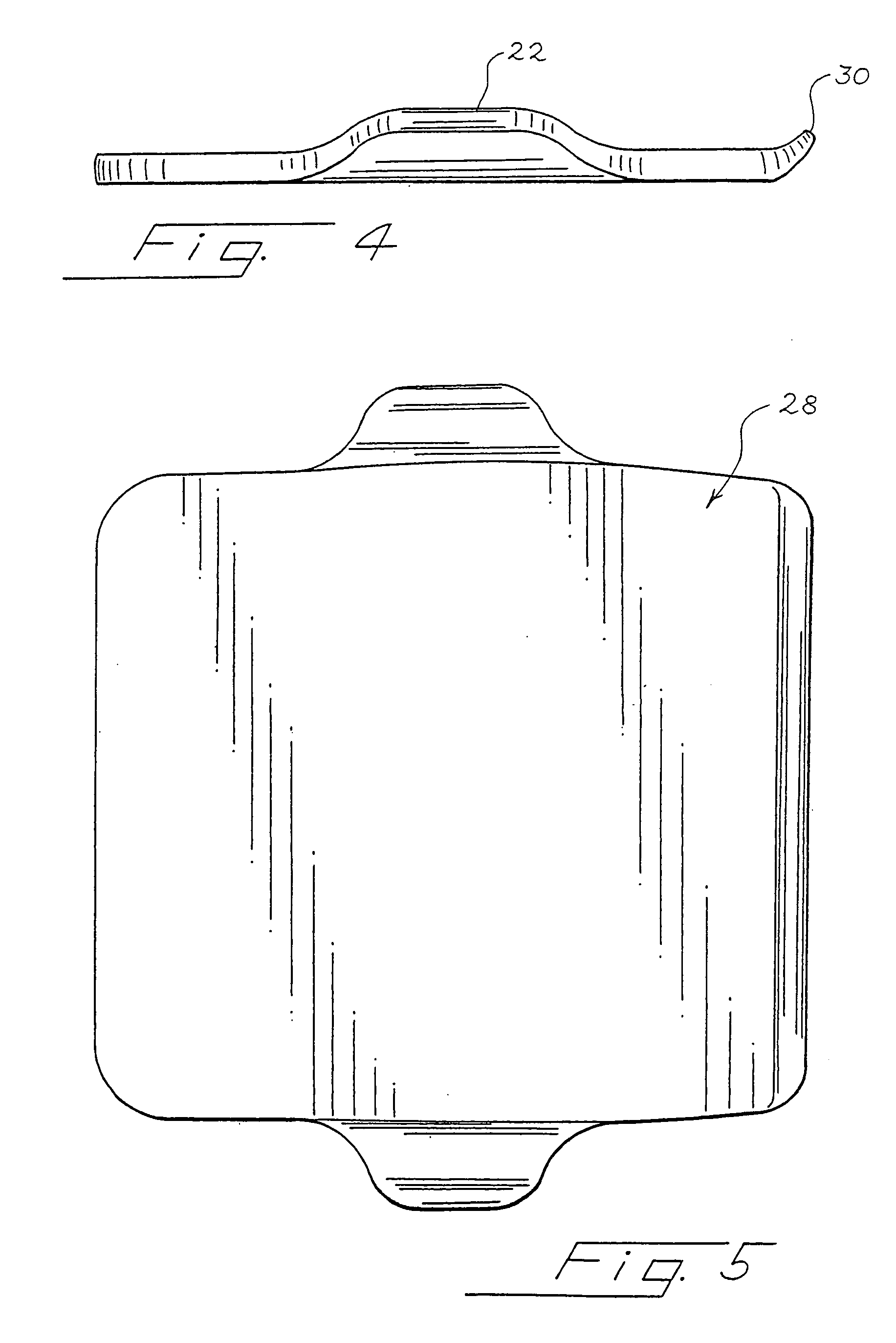Handled baking dish
a baking dish and handle technology, applied in the field of cooking dishes, can solve the problems of increasing the susceptibility of cracking or uneven wear of bakeware, reducing the ability of bakeware to cook food evenly, and enclosing the baking dish with a wall, so as to reduce the likelihood of cracking or uneven wear, reduce the likelihood of user burns, and facilitate the transportation of baking dishes
- Summary
- Abstract
- Description
- Claims
- Application Information
AI Technical Summary
Benefits of technology
Problems solved by technology
Method used
Image
Examples
first embodiment
[0023]FIGS. 1 through 5 show a baking dish according to the present invention. As shown in FIG. 1, the baking dish 10 includes a flat tray 12 having a rectangular outer edge formed from four sides 14, 16, 18, 20. Flat tray 12 has a thickness of about ⅛ inch to about 2 inches, and preferably about ¼ inch to about ¾ inch. The thickness of the flat tray affects the thermal properties of the baking dish. Increasing the thickness of the flat tray increases the amount of time and heat needed to increase the temperature of the dish, and also increases the amount of time that the dish will retain heat after a heat source has been removed.
[0024]Extending from side 14 is first handle 22, and extending from side 18 is second handle 24. As shown in FIGS. 2 and 3, first handle 22 extends outward from one side of flat tray 12 and extends slightly above flat tray 12. Second handle 24 extends from an opposite side of flat tray 12 and extends slightly above flat tray 12. Handles 22,24 extend about 1...
second embodiment
[0030]FIGS. 6 through 9 show a baking dish according to the present invention. As shown in FIG. 6, the baking dish 110 includes a flat tray 112 having a circular outer circumference 114. Flat tray 112 has a thickness of about ⅛ inch to about 2 inches, and preferably about ¼ inch to about ¾ inch.
[0031]Extending from outer circumference 114 is first handle 122 and second handle 124. As shown in FIGS. 7 and 8, first handle 122 extends outward from one side of flat tray 112 and extends slightly above flat tray 112. Second handle 124 extends from an opposite side of flat tray 112 and extends slightly above flat tray 12. Handles 122,124 extend about 1 inch to about 5 inches outward and about ½ inch to about 4 inches upward from the outer edge of the flat tray 112. Handle 122 extends at obtuse angle C from flat tray 112, and handle 124 extends at obtuse angle D from flat tray 112. Handles 122, 124 are slightly curved and contain rounded end portions.
[0032]First handle 122 and second handle...
PUM
 Login to View More
Login to View More Abstract
Description
Claims
Application Information
 Login to View More
Login to View More - R&D
- Intellectual Property
- Life Sciences
- Materials
- Tech Scout
- Unparalleled Data Quality
- Higher Quality Content
- 60% Fewer Hallucinations
Browse by: Latest US Patents, China's latest patents, Technical Efficacy Thesaurus, Application Domain, Technology Topic, Popular Technical Reports.
© 2025 PatSnap. All rights reserved.Legal|Privacy policy|Modern Slavery Act Transparency Statement|Sitemap|About US| Contact US: help@patsnap.com



